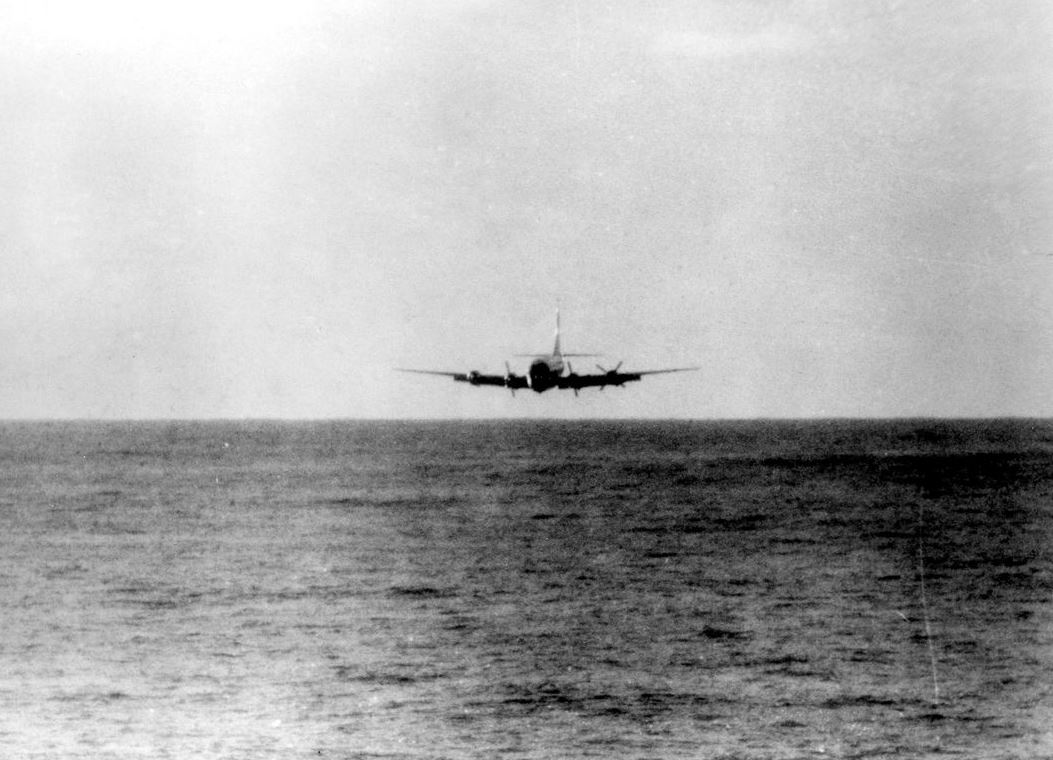Including Pan Am Flight 6 and US Airways Flight 1549, There Have Only Been a Handful of Similarly Miraculous Outcomes in Aviation History
We all know “Sully” became a hero when he ditched his US Airways Airbus A320 on the Hudson River after birdstrikes took out both engines on Flight 1549 in 2009. However, Sully was not the first pilot to ditch an airliner without losing a passenger or crew member.
One of the lesser-known but equally amazing instances of a ditching with all souls on board surviving the event occurred on 16 October 1956, when a Pan American World Airways Boeing 377 Stratocruiser (N90943 Pan Am number 943) flying as Pan Am Flight 6 was forced to ditch in the open Pacific Ocean roughly halfway between Honolulu and San Francisco.
Thanks to YouTuber PeriscopeFilm for uploading this Coast Guard film about Pan Am Flight 6.
Equipment Switch Leads to Trouble Over Open Ocean
The flight originated at Philadelphia as a Douglas DC-6B and proceeded to Honolulu after a stop in San Francisco. The flight switched equipment to the 377 Clipper Sovereign of the Skies for the trip back to San Francisco.
Just after passing the decision point, the flight experienced engine problems that forced the crew to shut down the first one and later the other outboard Pratt & Whitney R-4360 engines (1 and 4). Unable to make San Francisco or return to Honolulu due to reduced power and a windmilling prop on number 1, a May Day call was broadcast by the crew.

The Coast Guard Cutter Standing By
Maintaining the United States Coast Guard (USCG) mid-Pacific vigil at Ocean Station November that night was the Owasco-class Coast Guard Cutter Pontchartrain (HWEC-70). Fortunately for the passengers and crew of Flight 6, the Pontchartrain was able to prepare to assist the survivors after the Sovereign ditched.
During the previous year, a 377 (Pan Am 845/26) had been forced to ditch off the Oregon coast. That aircraft broke up when the tail section broke off the airframe on initial impact. The crew of the Sovereign moved all passengers forward, leaving the tail empty of passengers.

Preparations for a Dicey Ditching
After flying orbits around the Pontchartrain until sunrise to burn off fuel, which would allow the plane to float longer on the water, the pilots flew several practice approaches to determine the lowest possible speed at which the 377 would remain controllable for ditching.
At 0540 local time, the pilot in command, Richard Ogg, radioed the Pontchartrain saying he was preparing to ditch the aircraft. In order to align the approach of the 377 into the wind for the lowest possible approach speed and to help Ogg determine his height above the water, the Pontchartrain used firefighting foam to indicate 315 degrees on the surface of the Pacific.

Incredible Skill and a Bit of Luck Combine for Best Possible Results
A veteran pilot with more than 13,000 flight hours over 20 years in the air, Ogg made his approach and ditched at 0615 local time. All on board the Sovereign survived the ditching with minimal injuries despite the aircraft breaking into two large pieces just aft of the wing trailing edge after one wing hit a swell and caused the 377 to rotate.
The crew and passengers deployed three life rafts. Everyone was into life rafts within minutes, and the Pontchartrain’s crew assisted with boats from the cutter. By the time the wreckage sank 20 minutes after impact, all souls on board the Sovereign were in Coast Guard care.

Heroic Cutter and the Crew of Flight 6
The Pontchartrain bore the passengers of Pan Am Flight 6 to their original destination, San Francisco, several days later.
The flight crew of the Sovereign of the Seas was 43-year-old pilot and card-carrying Badass Captain Richard N. Ogg, 40-year-old First Officer George L. Haaker, 31-year-old navigator Richard L. Brown, 30-year-old flight engineer Frank Garcia Jr., 30-year-old Purser Patricia Reynolds, 24-year-old stewardess Mary Ellen Daniel, and 23-year-old stewardess Katherine S. Araki.

[…] tanks provide insurance that the plane will have enough fuel to make the whole trip. Remember, there are no divert options between the Hawaiian Islands and the mainland! Of course, there are also the Pacific headwinds to deal with too when coming from the mainland. […]